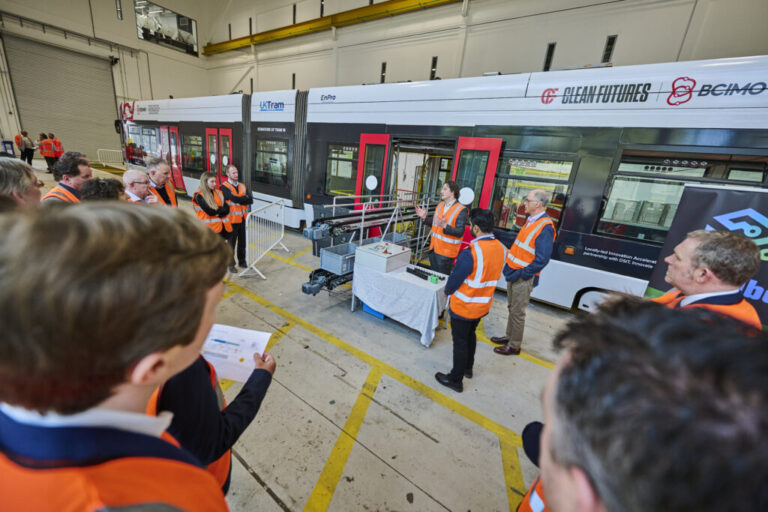Introduction
Climate change refers to the long-term shift in temperature and weather patterns. Human activities have been widely reported to be the main driver of climate change, primarily due to the burning of fossil fuels. The main global impact of climate change is associated with more frequent and intense drought storms, heatwaves, rising sea levels, melting glaciers and warm oceans; these can directly harm animals, destroy the places they live and wreak havoc on people’s livelihood and communities.
We are at a crossroads in history, as the UK recovers from the impact of COVID 19 on our lives and livelihoods. We know that it will no longer be business-as-usual to the way things were before the pandemic. The science is clear, we know that human activity is changing our climate and that this will have a devastating impact on human lives, the economy, and the natural world – ranging from the extinction of some species and the melting of ice caps, to extreme weather patterns threatening our homes, businesses, and communities.
The UK was the first major economy to create a legally binding target to bring greenhouse gas emissions to net-zero by 2050. This target was set considering the latest scientific evidence and was recommended by the Climate Change Committee (CCC), the UK’s independent climate advisory body. The net-zero target also responds to the overwhelming public support for acting on climate change. In recent surveys of the UK public, 80% of participants expressed concern about climate change.
Government is committed to ambitious decarbonisation measures across society. However, we know that this does not mean emissions will drop to absolute zero by 2050 – we acknowledge that sectors such as industry, agriculture, and aviation are difficult to decarbonise completely. Greenhouse Gas Removals (GGR), like trees and carbon capture and storage technology, are therefore essential to compensate for the residual emissions arising from these hard to decarbonise sectors, so the UK can reach net zero by 2050.

The UK construction industry contributes significantly to Greenhouse Gases (GHGs) emissions, this currently accounts for approximately 40 per cent of carbon emissions. Against this background, there are calls for the construction industry to reduce the adverse impact of its activities on the environment. The innovative approach aimed at reducing the impact of the construction industry in project delivery include:
- A whole life carbon assessment that addresses a building’s entire carbon impact throughout its lifecycle. Moving towards a net-zero carbon built environment will require measurement and mitigation of carbon impact across all stages of the building lifecycle.
- The reporting of in-use embodied carbon impact in buildings is currently challenging, however, a modelled assessment of impacts should still be carried out. This assessment is valuable to inform early design decisions which is aimed at minimising the building’s whole life carbon impact.
This blog seeks to outline some of the innovation approaches advanced by the construction industry in response to the need to mitigate against its whole life cycle carbon impact.
The concept of innovation in construction involves improvements in processes, products and services. Generally, improvements have been made in the process by leveraging technology to generate sustainable solutions to specific problems.
A report, on the Construction industry, a commission by the UK Government (The Farmer report 2016) highlighted legacy problems within the industry that must be addressed to determine the future of the industry, the report concludes that the construction industry must “Modernise or Die”.
However, the UK construction industry has introduced significant innovative practices towards decarbonisation, aimed at net zero carbon outcomes. The blog will review some of the drivers for change and innovative responses.
A summary of some of the innovative approaches in the construction industry includes:
- Automation – Virtual Reality (VR) and Modern Methods of Construction (MMC)
- Simulation and Modelling
- Digitalisation and Visualisation
- Building Information Modelling (BIM)
Automation


The significance of the Farmers report, to the UK construction industry, cannot be overemphasised. Farmer noted the numerous problems facing the UK construction industry had been well documented for years. The report identified ten main challenges facing the UK construction industry some of which include:
- Low productivity
- Poor collaboration and improvement culture
- Lack of R&D and investment in innovation
- Low productivity
The Farmers review stresses the need for the UK construction industry to embrace and develop pre-manufactured building components (Offsite Manufacturing Construction – (OSM))

The industry has responded to the widening gap between an ageing workforce and a decline in new entrants’ by embracing, automation, offsite manufacturing construction, digitalisation and robotics.
In response, digitalisation has been identified as a crucial factor in underpinning construction processes in the UK. New technologies, successfully employed by other industrial sectors, such as manufacturing, are being used to significantly boost productivity in the Construction industry. For example, OSM a key component in the Modern Methods of Construction (MMC), is an innovation to the construction processes. Research studies suggest that OSM/MMC eliminates 22% of the dependency on on-site labour by undertaking some or all construction activities in a controlled factory environment. The MMC has been identified as a significant part of the solution to meet the current UK housing deficit and increased future demand.
Simulation and Modelling

Construction projects are increasingly complex and constrained by numerous factors. Indeed, the construction process calls for sound decision making across all stages. Furthermore, decision making depends on reliable information. Project information is derived from legacy project data that was not readily available before the digitalization of the sector.

Environmental and Energy simulation approaches adopted in Architecture, Engineering and Construction (AEC) sector underpin decision making across planning, design and construction in the sector. Essentially, a decision support tool with the potential to significantly increase the efficiency and effectiveness of the construction process whilst eliminating waste and reducing GHGs emissions towards net-zero targets.
Digitization and Visualisation

The construction value chain comprises a business model which involves a myriad of stakeholders linked through different activities. Inherently fragmented with a high dependency on the continuous exchange of information and little to no systematic and methodological agreement of interaction, undermines the optimum performance of construction processes.
In this concern, digitization in the construction industry is seen as the single most significant driver of change[1]. Building Information Modelling (BIM) involves the generation, management and sharing of digital information for the planning, design, construction and management of assets/buildings throughout the asset lifecycle. BIM as a digital collaboration platform enhances collaboration and communication across the project team and also advances decarbonisation at all stages of the project procurement.

Within the BIM platform, an entire project may be planned, designed and visualised allowing for the project to be built twice, first digitally and then physically thus reducing a significant number of reworks through better coordination. The UK construction industry has pioneered advancements of BIM and integrated digital delivery. Some of the efforts include the UK Government 2016 BIM mandate. This UK construction industry innovation has crystallised into an international BIM standard, the ISO 19650 standard – an international standard for managing information over the whole life cycle of a built asset using building information modelling (BIM).
The visualisation also extends to risk analysis and safety evaluations to ensure adequate health and safety during the execution of projects. Mitigation of other types of risks and reduction in cost has also been found to yield a positive return on investment by up to 75 per cent.
As innovation in construction has been facilitated by technology, inherently, advancement in technology will result in innovations in construction. The fourth industrial revolution, dubbed “Industry 4.0” conceptualises a fast change in technology due to increasing interconnectivity and smart automation. The industrialization of construction, where more complex building systems and achieved by industrial processes.
An absolute reduction in emission from the industrial sector will require the deployment of a broad set of mitigation options beyond energy efficiency measures.
It is clear that the construction industry can take major steps toward helping the UK reach its 2050 Net Zero goal. This blog has addressed 4 innovations that can help achieve that goal. The West Midlands Innovation Programme has recently funded a feasibility study called “Repurposing to Zero” to explore how a place-based approach to Net Zero that places equal emphasis on social, environmental, and economic sustainability can energise economic recovery post-pandemic. Proposed outputs include a digital toolkit for private- and public-sector stakeholders, the formation of a Design Review Panel, and a series of motion graphics videos that articulate the concepts of “repurposing,” and “repurposing to zero”. The team invites consultation and will engage with stakeholders through a series of demand aggregation workshops and focus groups. Anyone who’s interested in these can contact Jordan Gerrard or Devon Geary for further details. This is all a starting point, and anyone reading this blog is invited to join the conversation.
Author, Dr Louis Gyoh
Virtual Innovation Team Lead, Construction; Principal Lecturer & HOD Built Environment, School of Architecture & Built Environment, University of Wolverhampton

[1] Andersson, N. and Lessing, J., 2020. Industrialization of construction: Implications on standards, business models and project orientation. Organization, technology & management in construction: an international journal, 12(1), pp.2109-2116.





